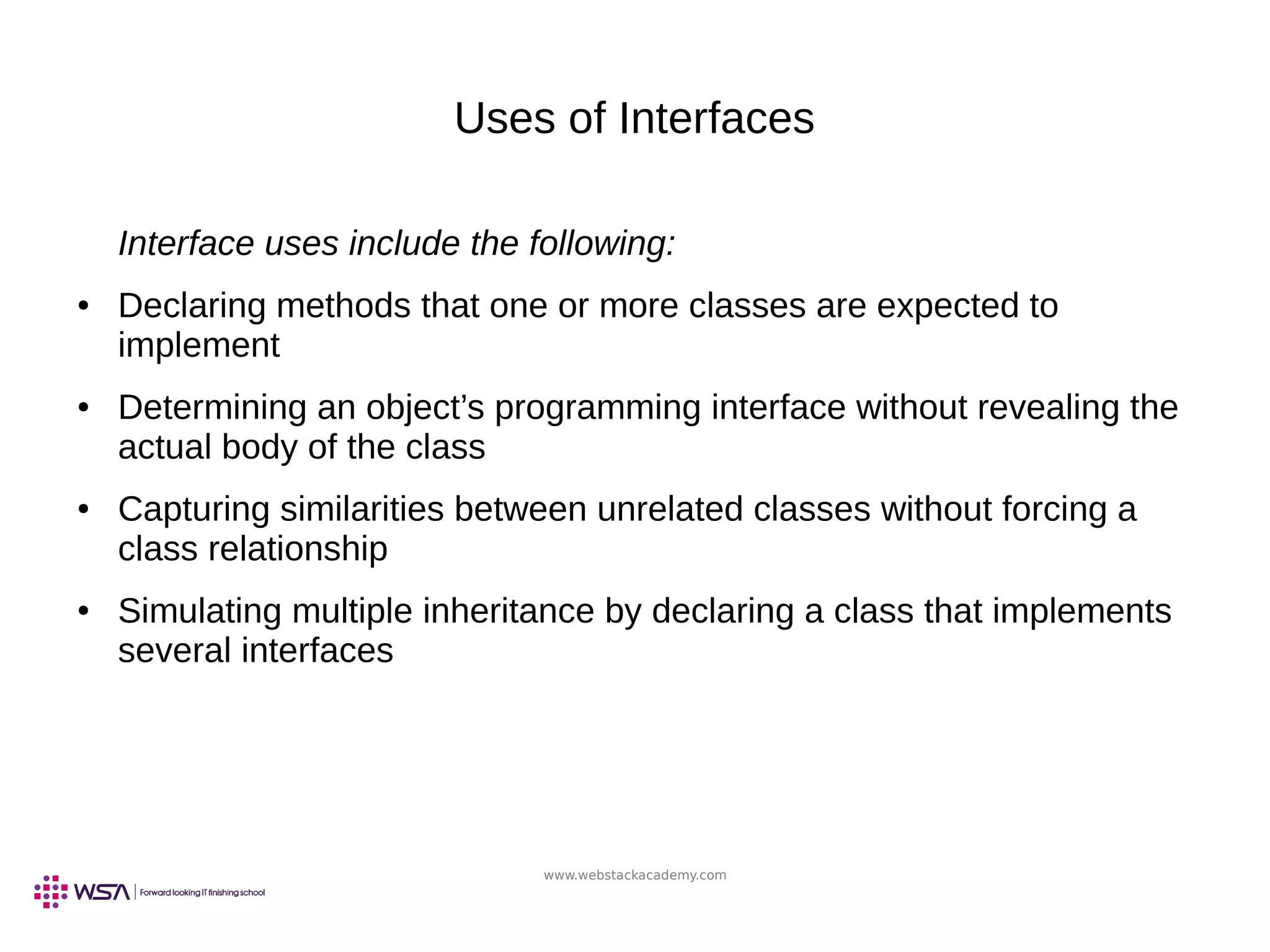This document covers advanced features of Java programming, including static variables, final classes, enumerated types, abstract classes, and interfaces. It explains the use of the static keyword, how to create constants, and the non-modifiable nature of final classes and methods. Additionally, it discusses enumerated types and their safety, along with the concept of interfaces and their utility in Java.
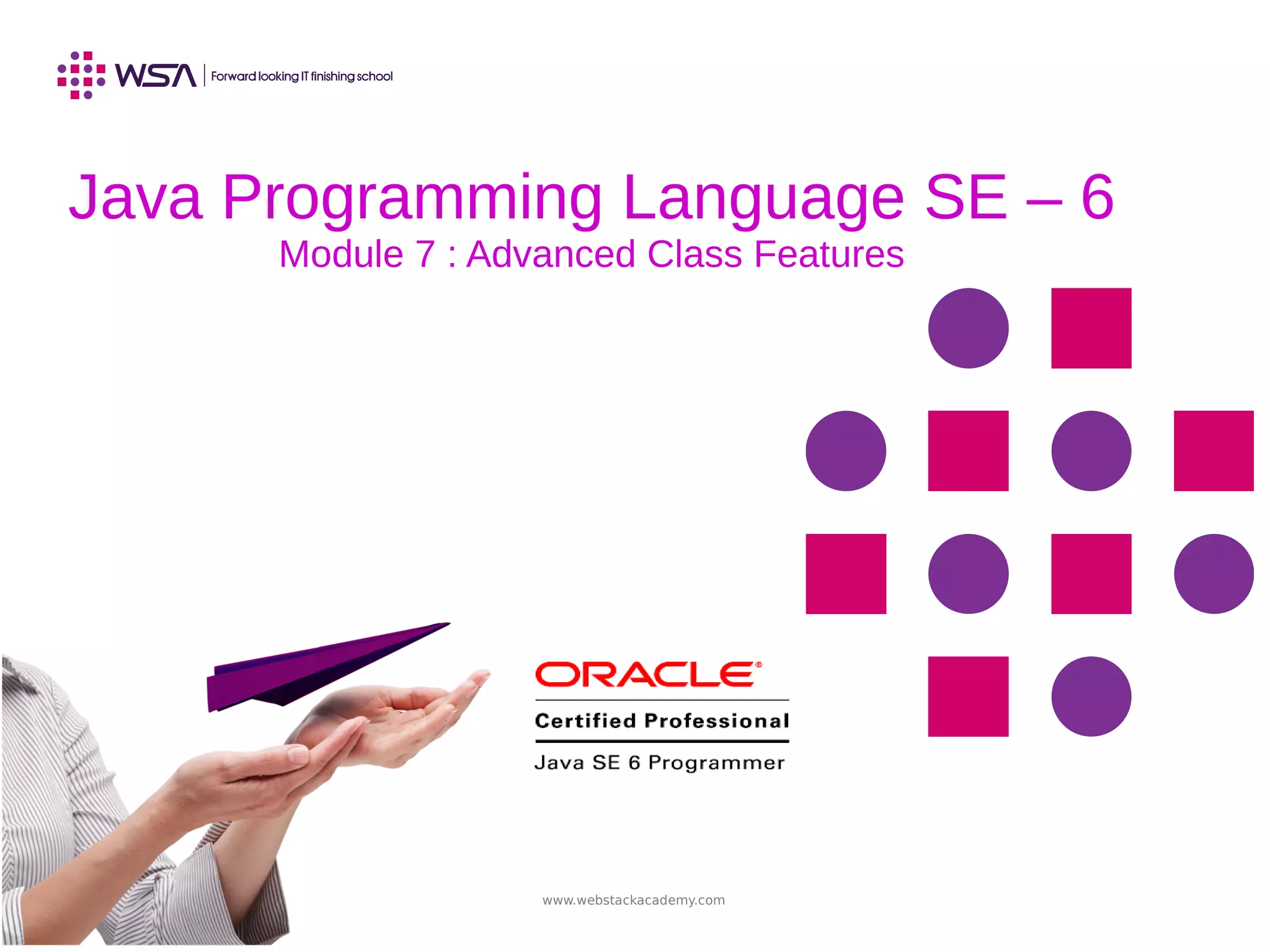
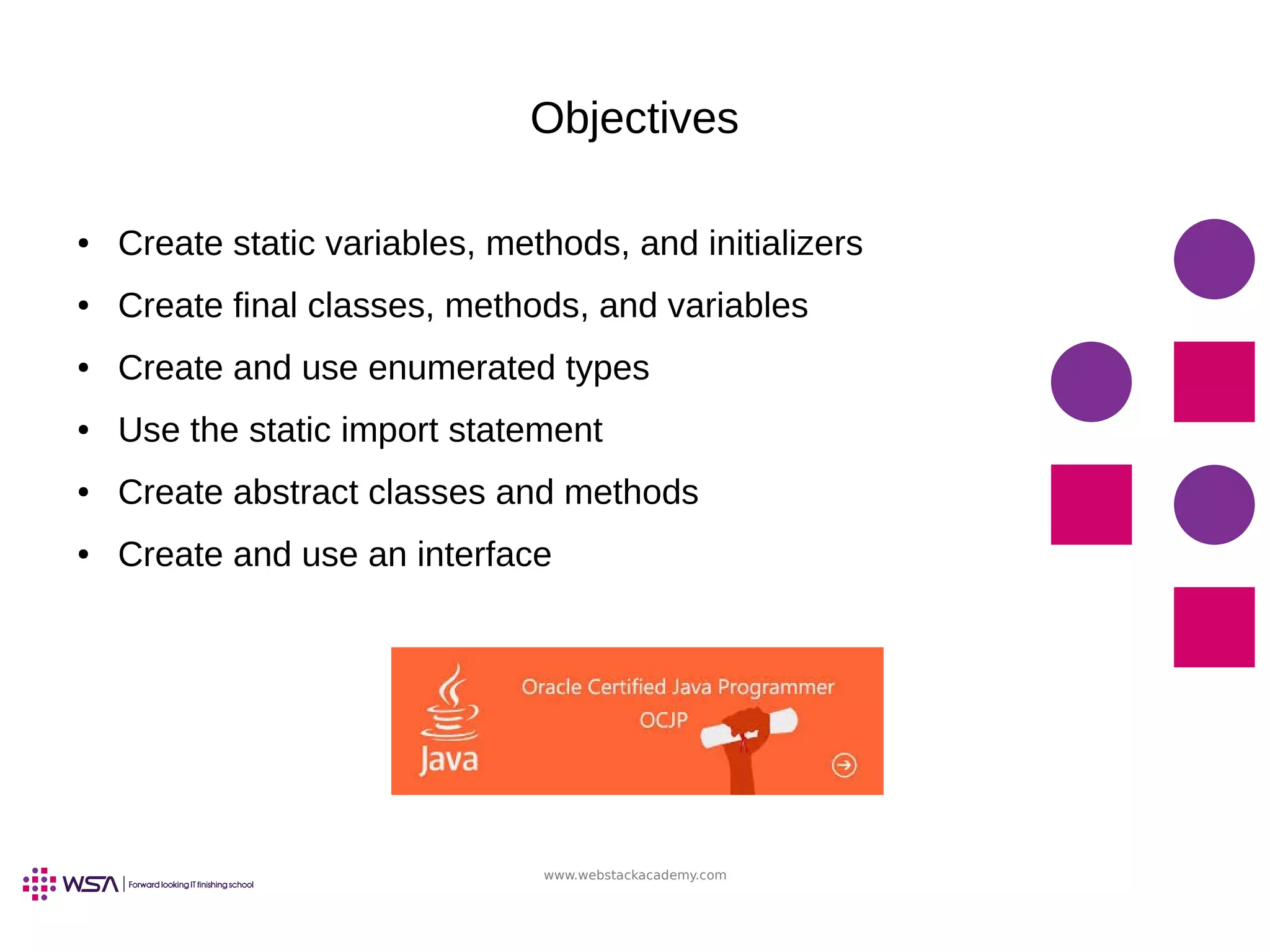

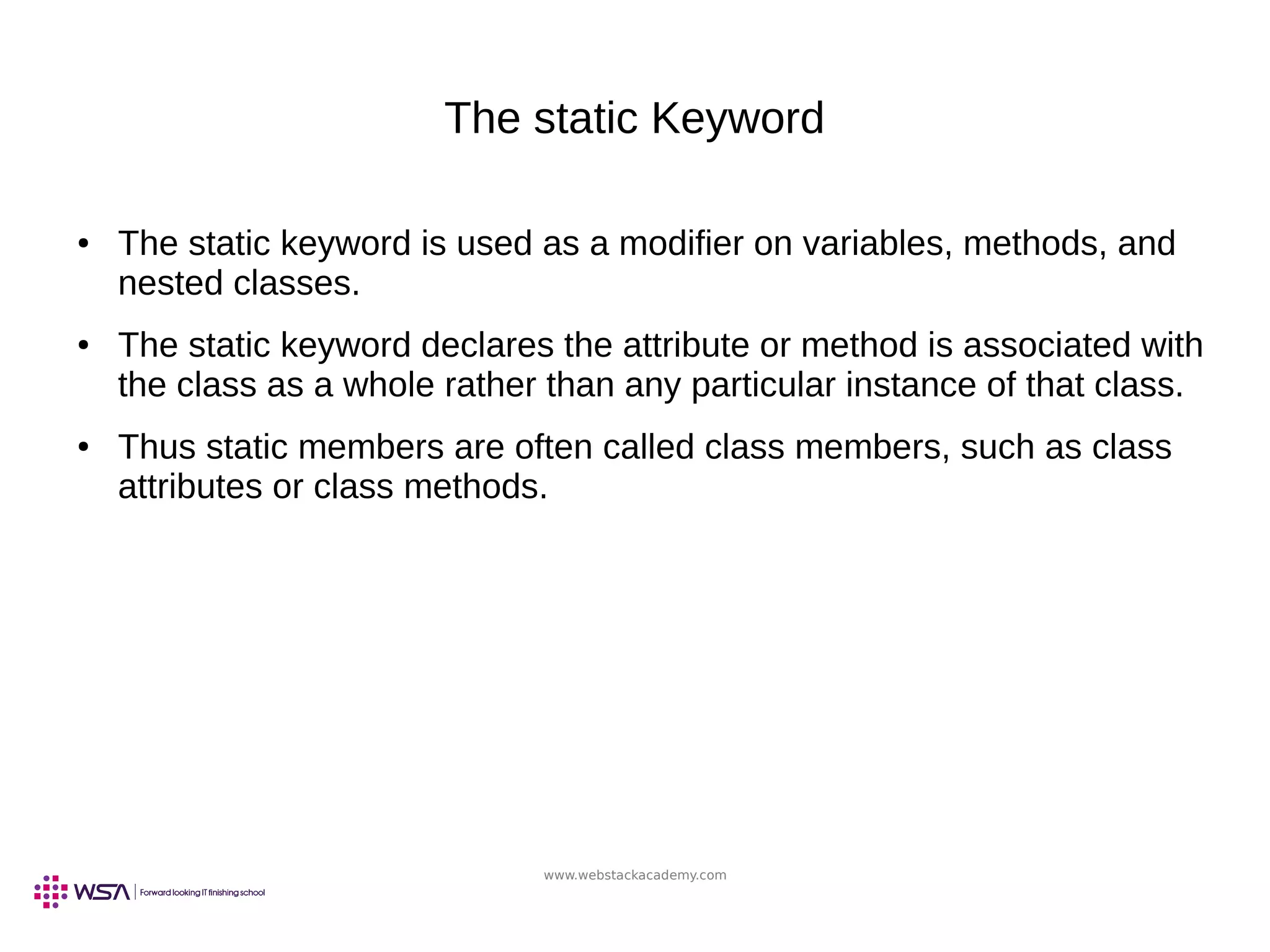
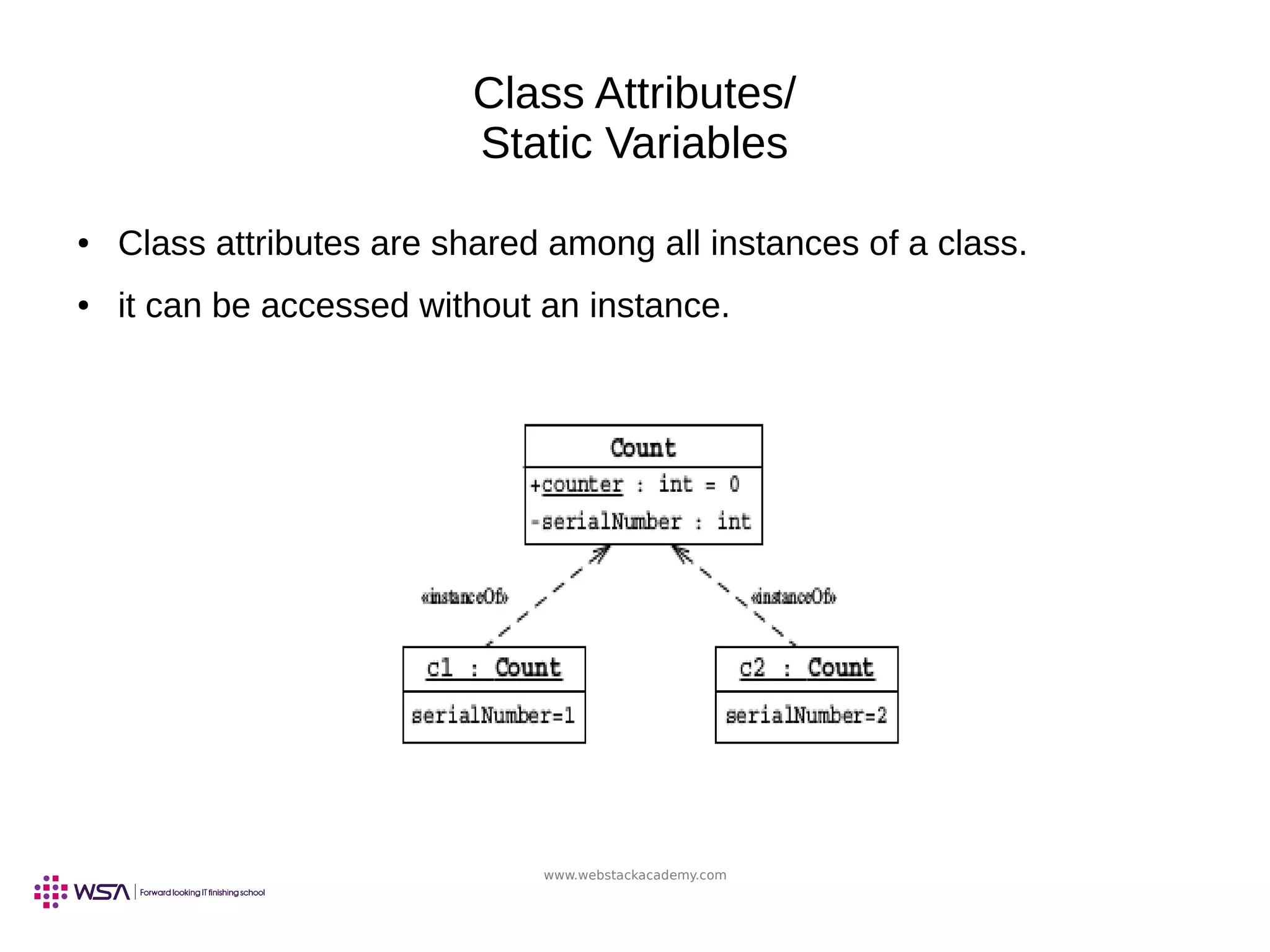
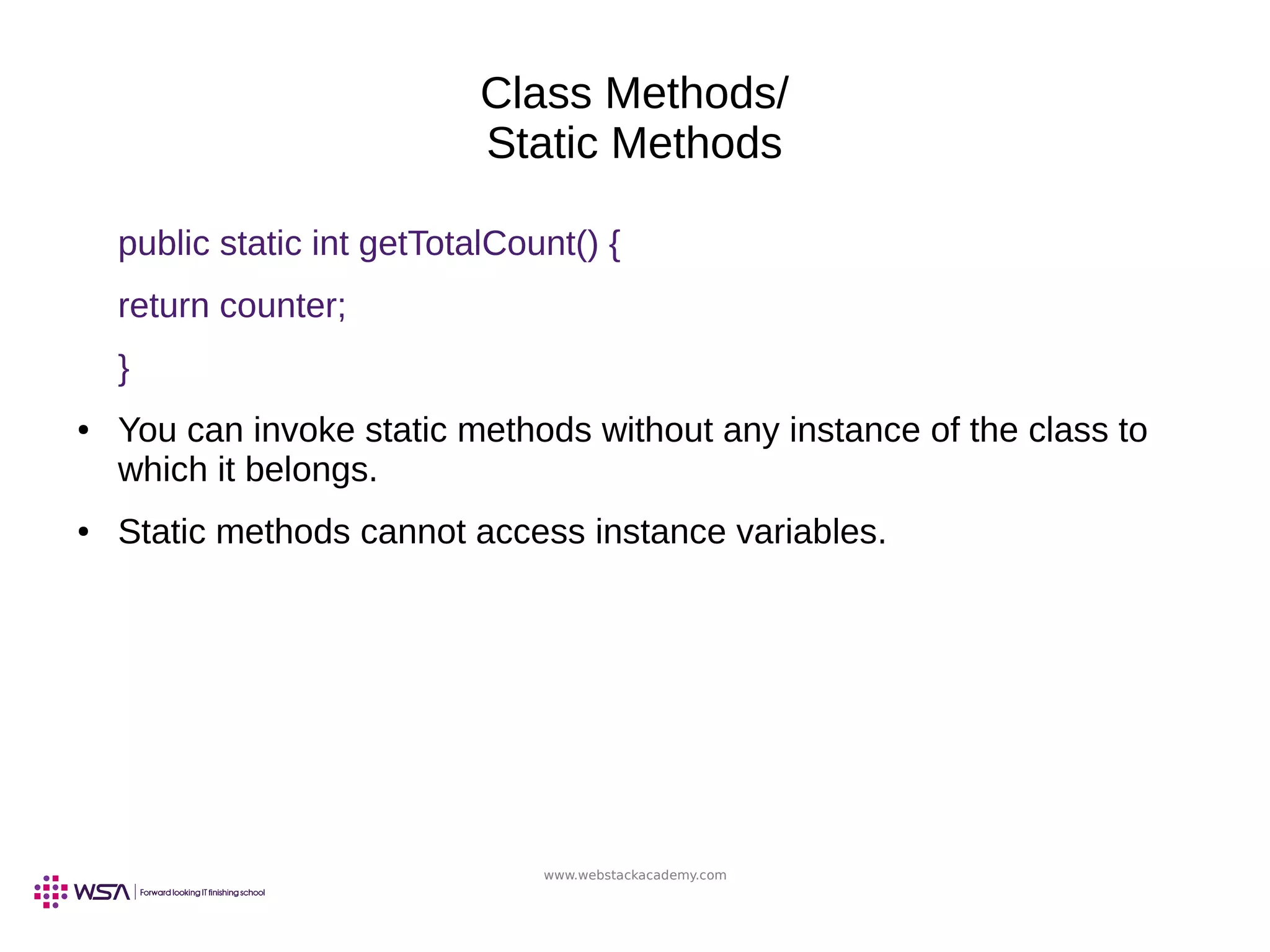
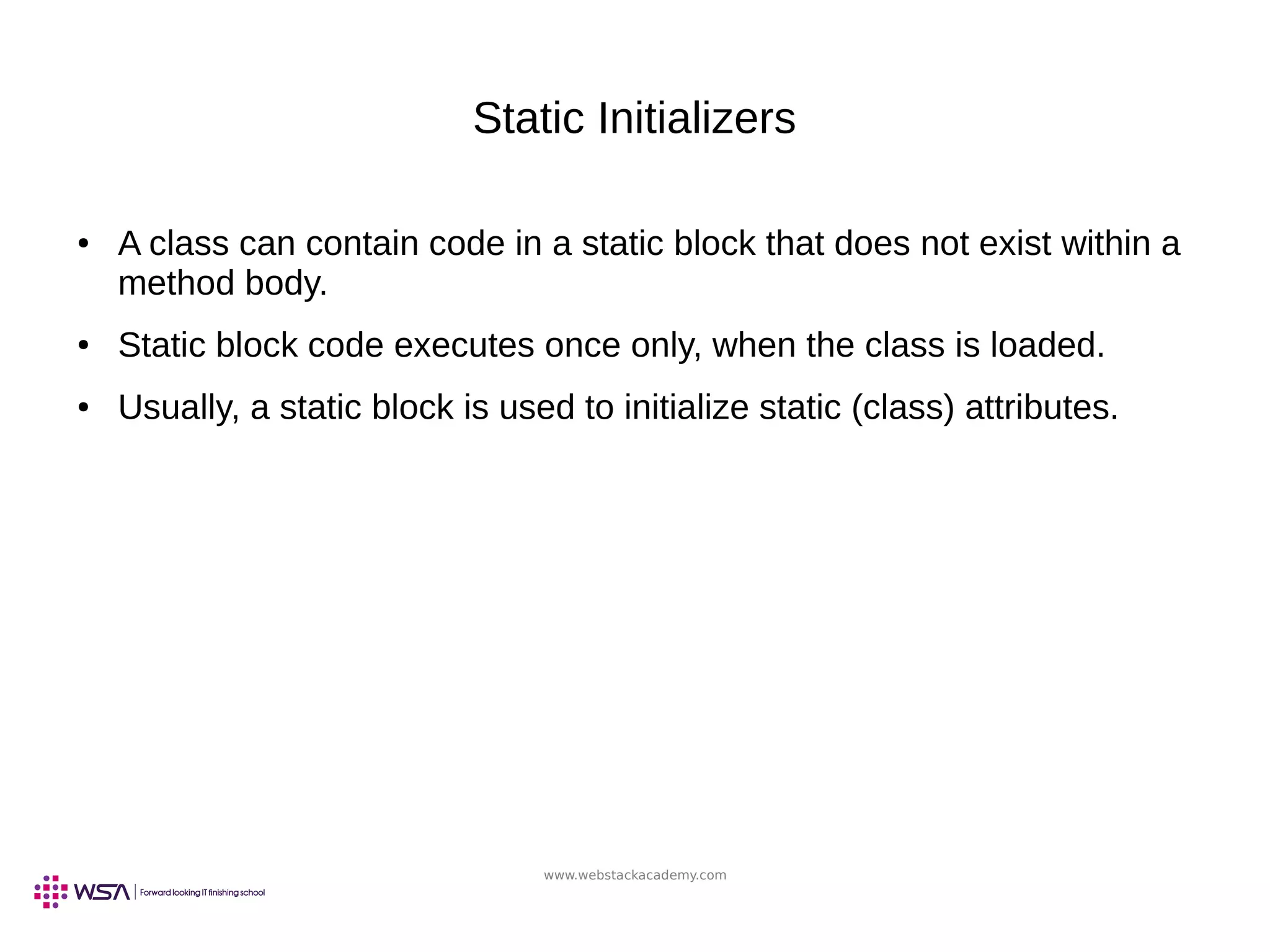
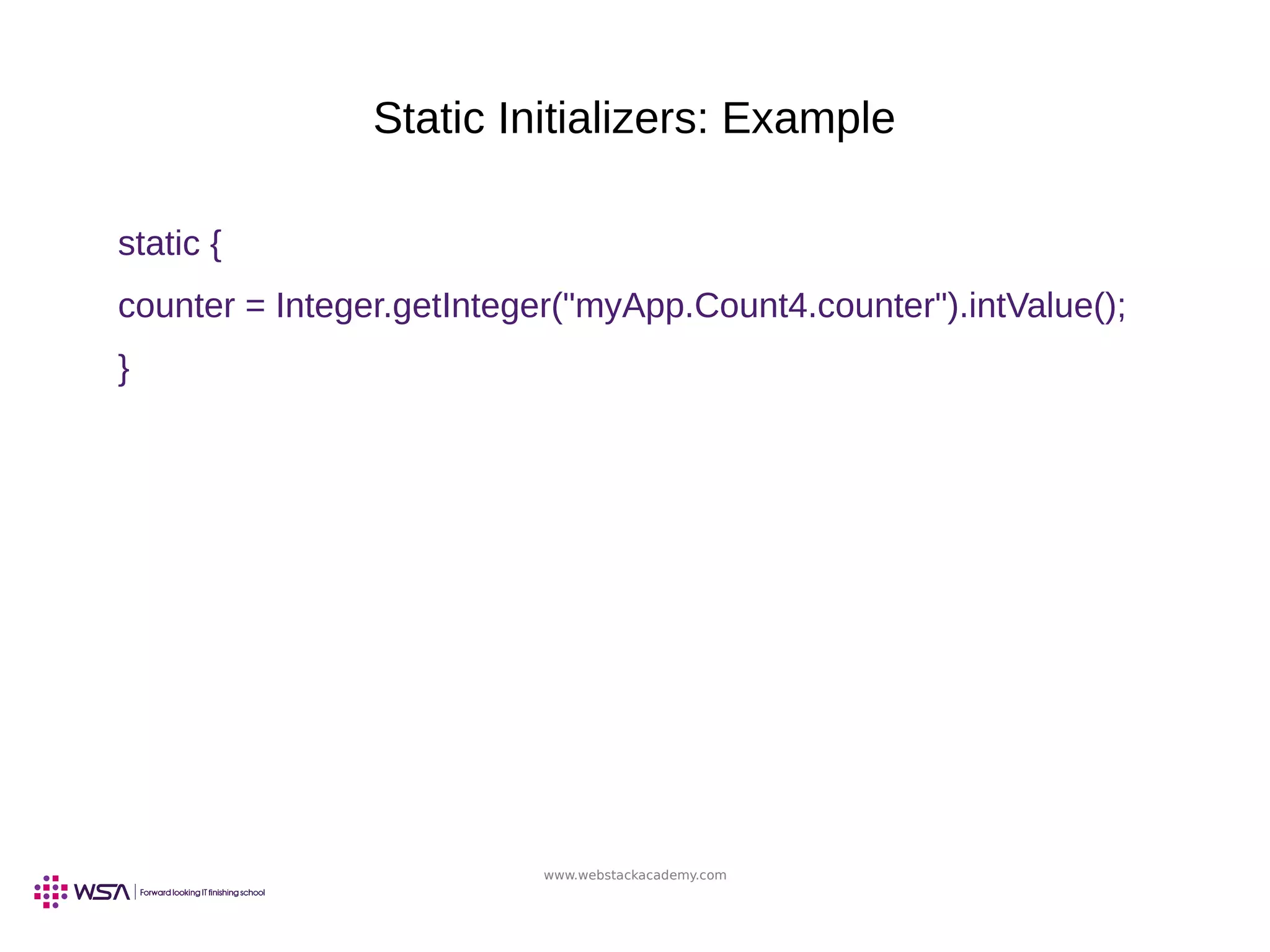
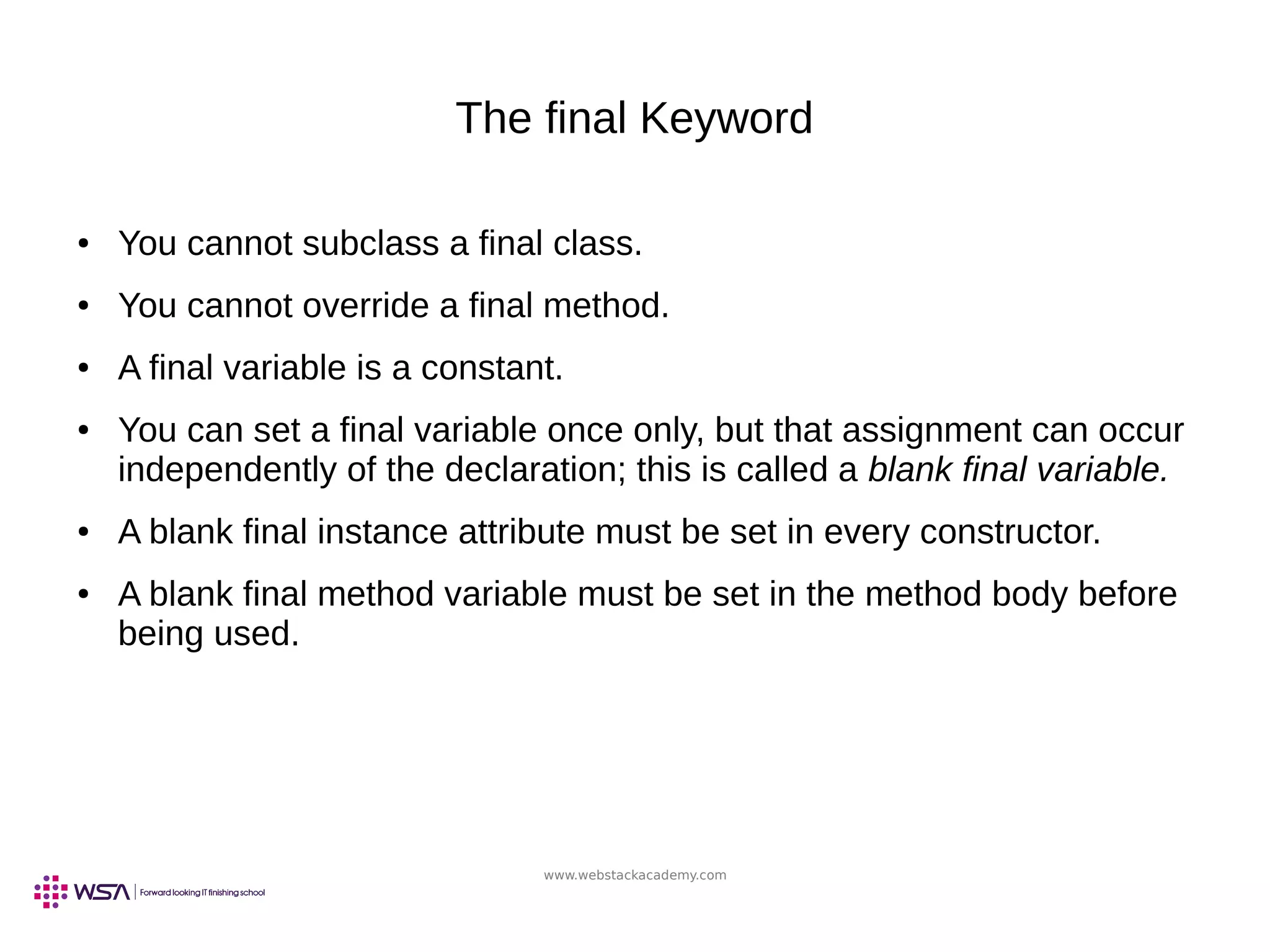

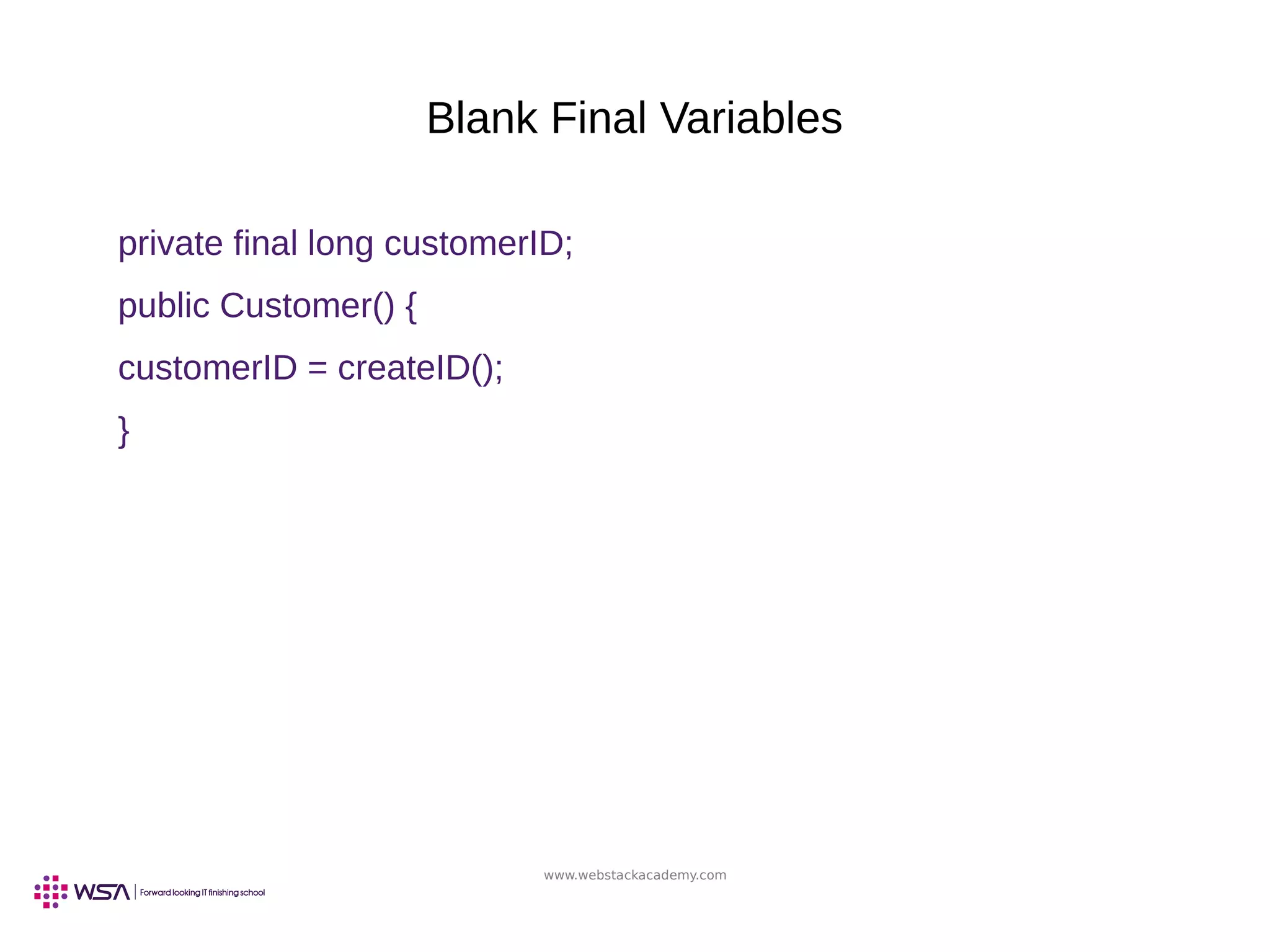

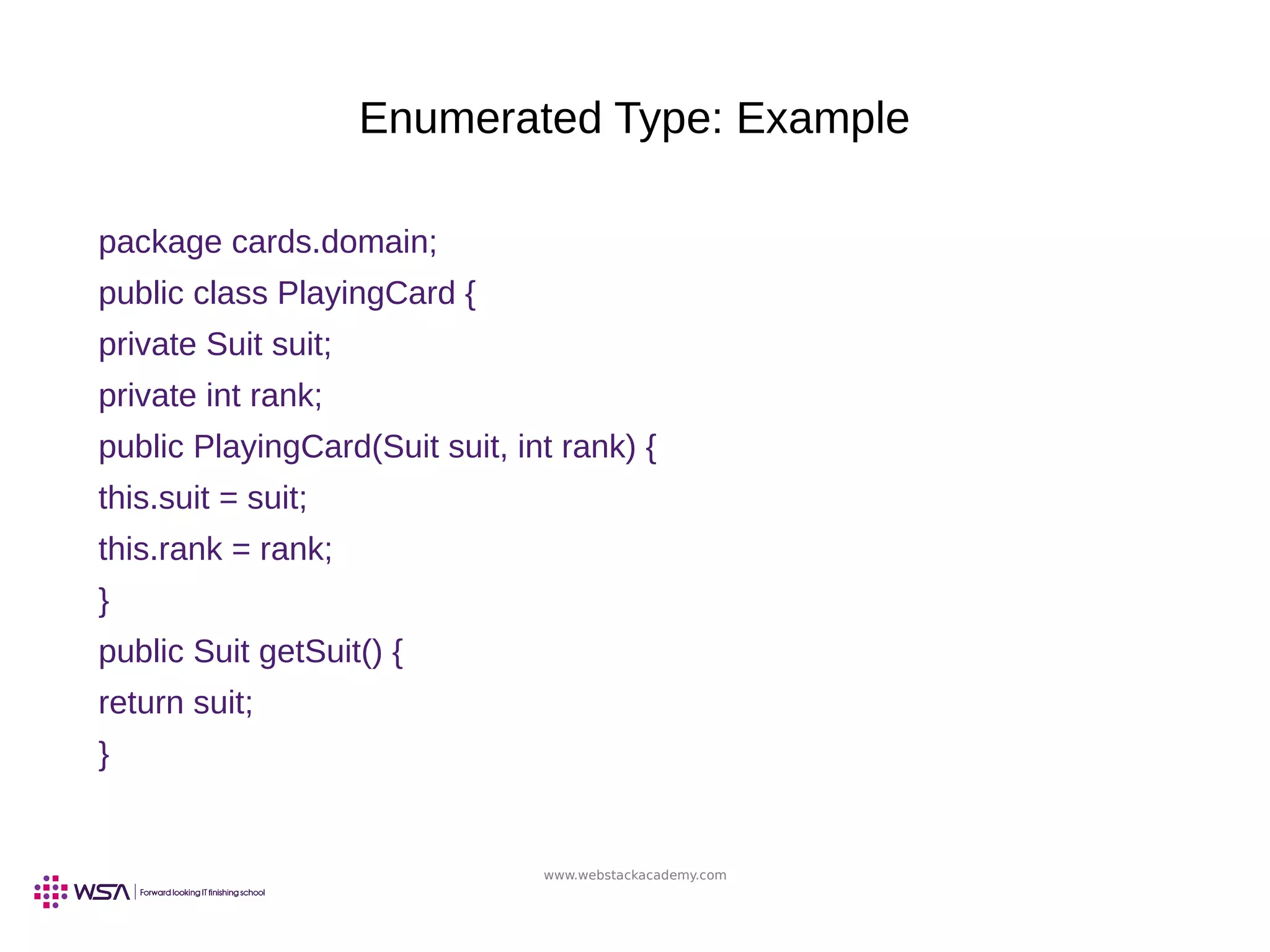

![www.webstackacademy.com
Enumerated Type
● Enumerated types are type-safe:
package cards.tests;
import cards.domain.PlayingCard;
import cards.domain.Suit;
public class TestPlayingCard {
public static void main(String[] args) {
PlayingCard card1 = new PlayingCard(Suit.SPADES, 2);
System.out.println(“card1 is the “ + card1.getRank() + “ of “ +
card1.getSuitName());
// PlayingCard card2 = new PlayingCard(47, 2);
// This will not compile.
}}](https://image.slidesharecdn.com/007javaseadvancedclassdesign-190430061009/75/Core-Java-Programming-Language-JSE-Chapter-VII-Advanced-Class-Features-15-2048.jpg)

![www.webstackacademy.com
Advanced Enumerated
Types
package cards.tests;
import cards.domain.PlayingCard;
import cards.domain.Suit;
public class TestPlayingCard {
public static void main(String[] args) {
PlayingCard card1 = new PlayingCard(Suit.SPADES, 2);
System.out.println(“card1 is the “ + card1.getRank()
+ “ of “ + card1.getSuit().getName());
// NewPlayingCard card2 = new NewPlayingCard(47, 2);
// This will not compile.
}}](https://image.slidesharecdn.com/007javaseadvancedclassdesign-190430061009/75/Core-Java-Programming-Language-JSE-Chapter-VII-Advanced-Class-Features-17-2048.jpg)
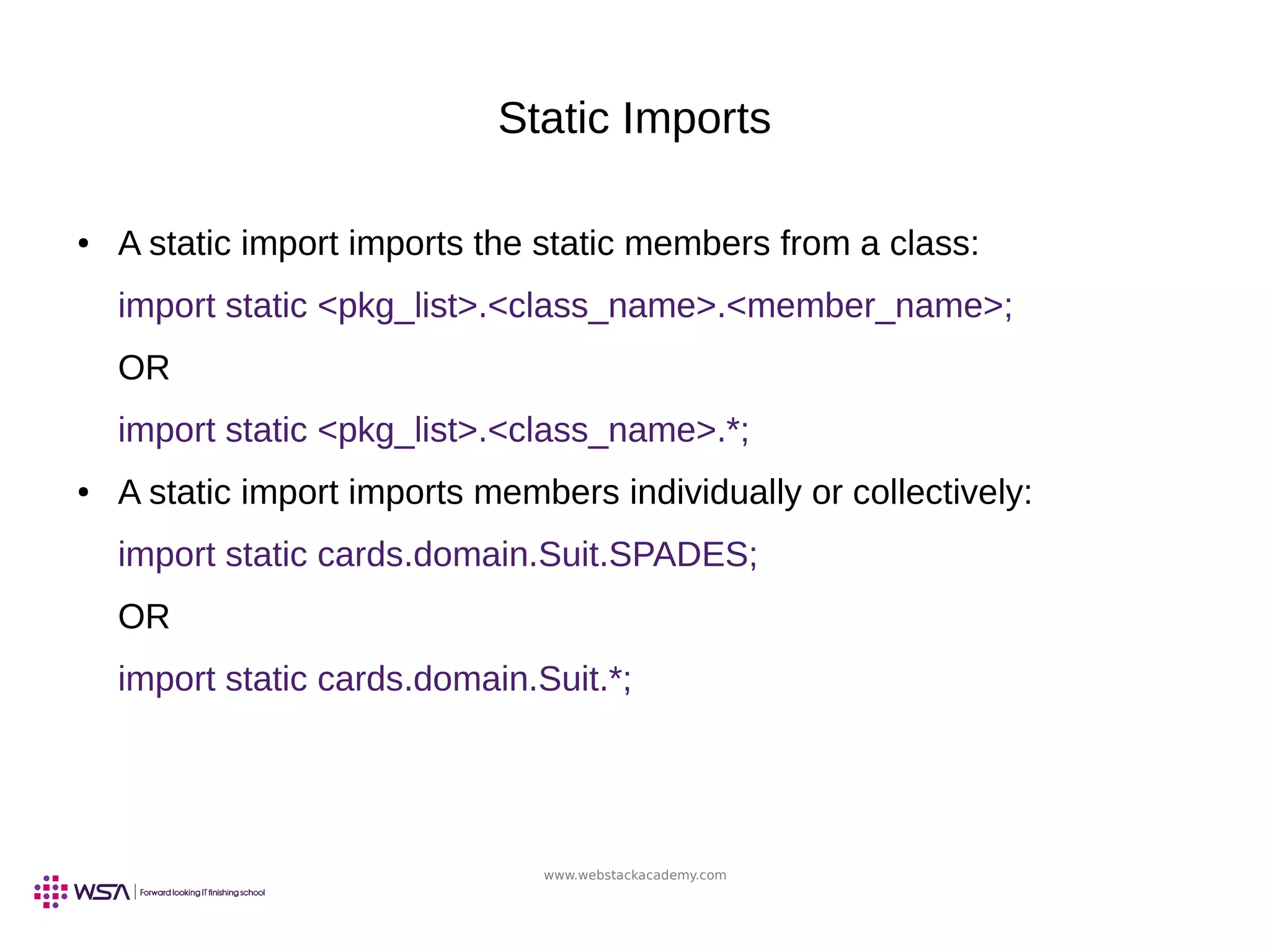

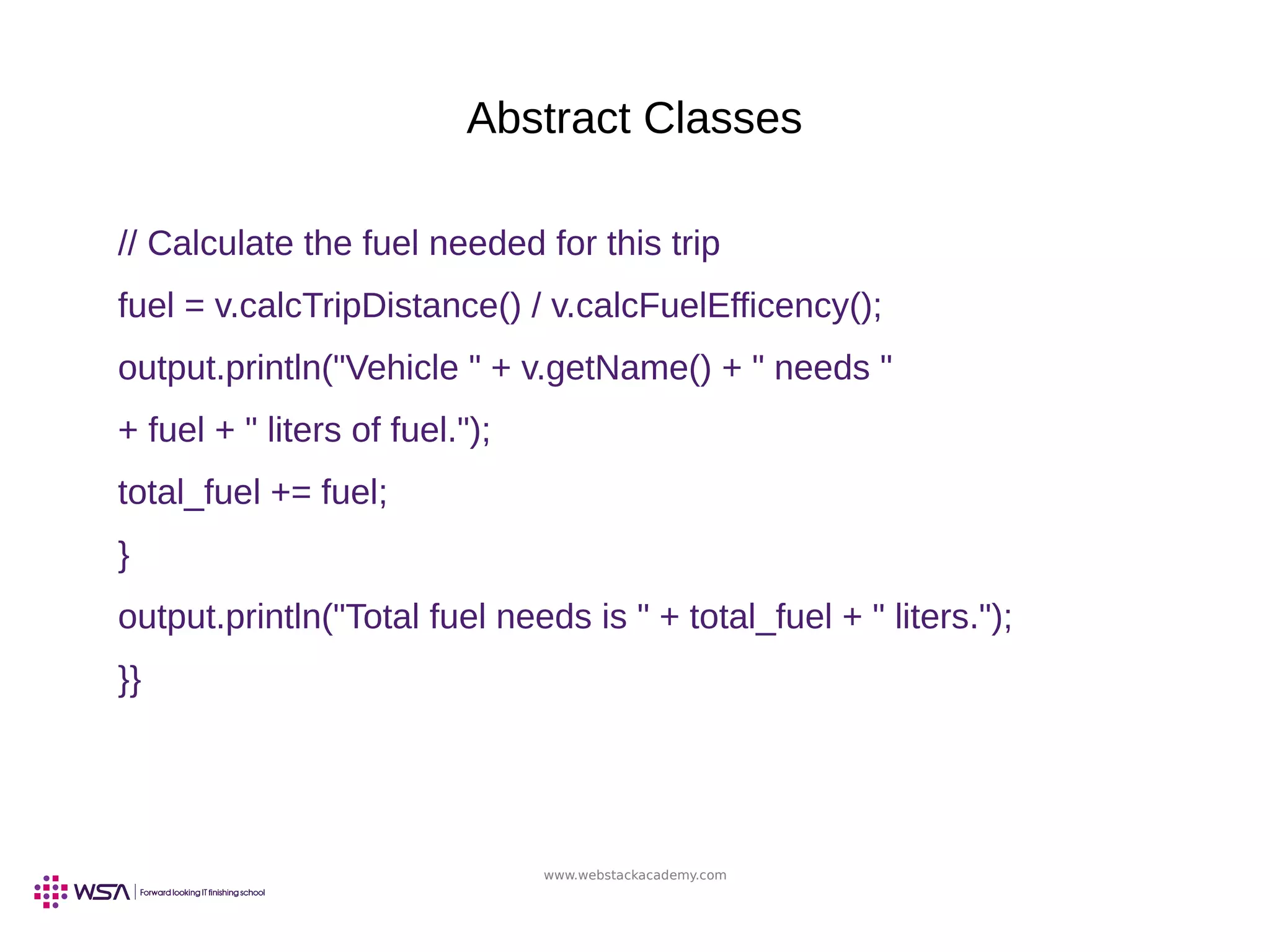

![www.webstackacademy.com
Interfaces
● A public interface is a contract between client code and the class that
implements that interface.
● A Java interface is a formal declaration of such a contract in which all
methods contain no implementation.
● Many unrelated classes can implement the same interface.
● A class can implement many unrelated interfaces.
● Syntax of a Java class is as follows:
<modifier> class <name> [extends <superclass>]
[implements <interface> [,<interface>]* ] {
<member_declaration>*
}](https://image.slidesharecdn.com/007javaseadvancedclassdesign-190430061009/75/Core-Java-Programming-Language-JSE-Chapter-VII-Advanced-Class-Features-22-2048.jpg)
